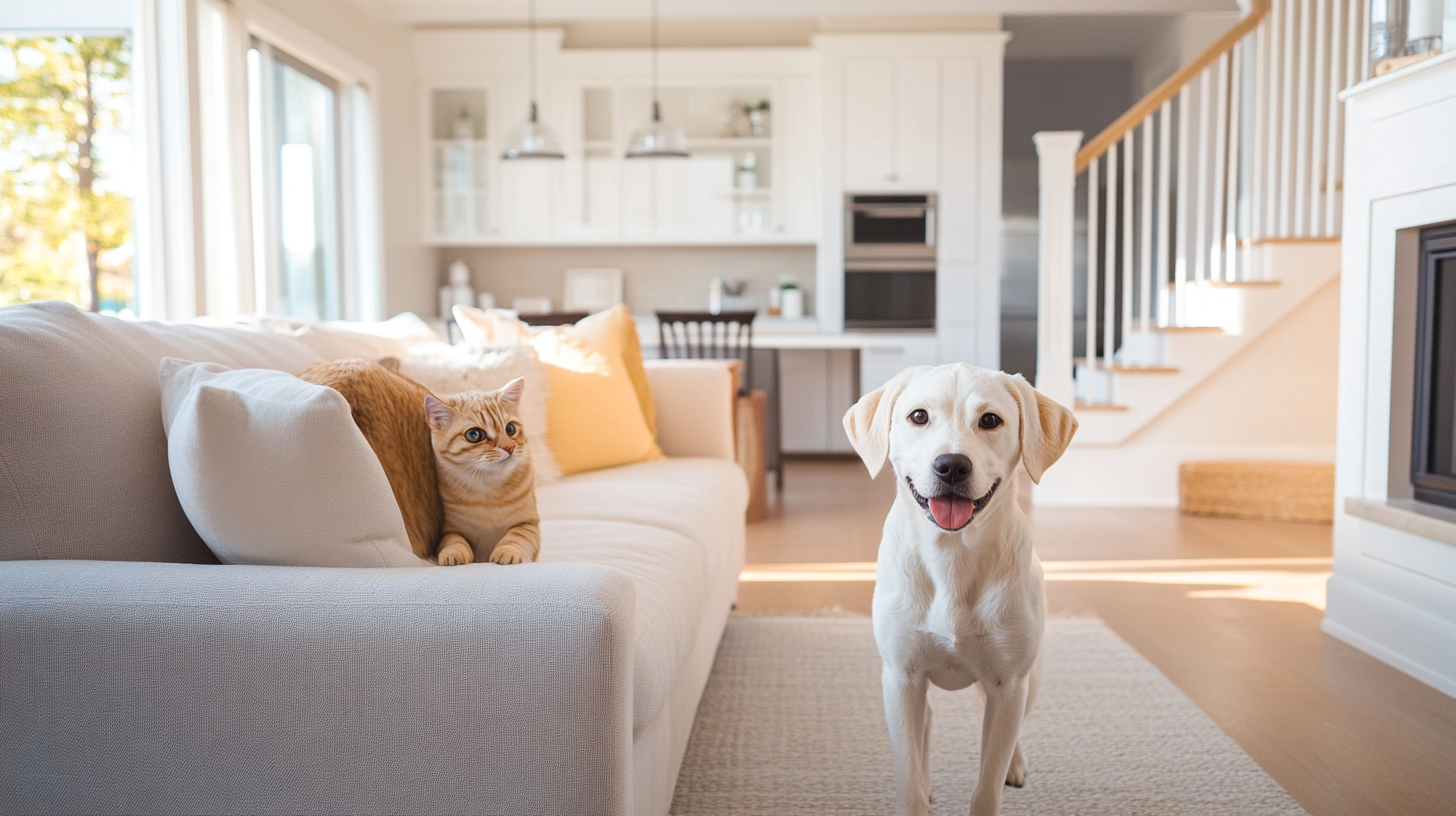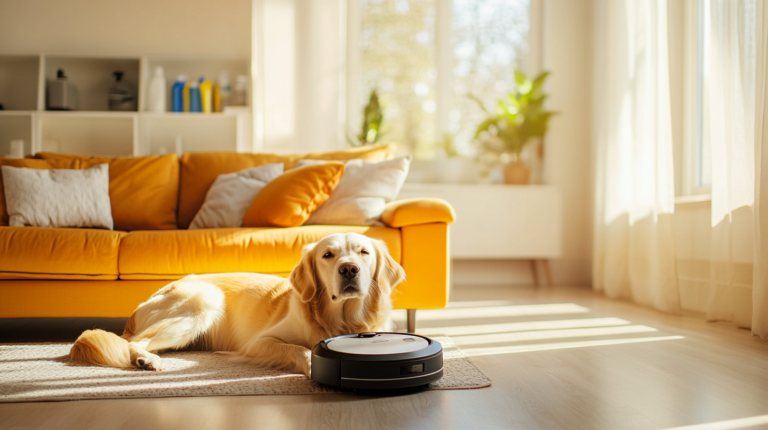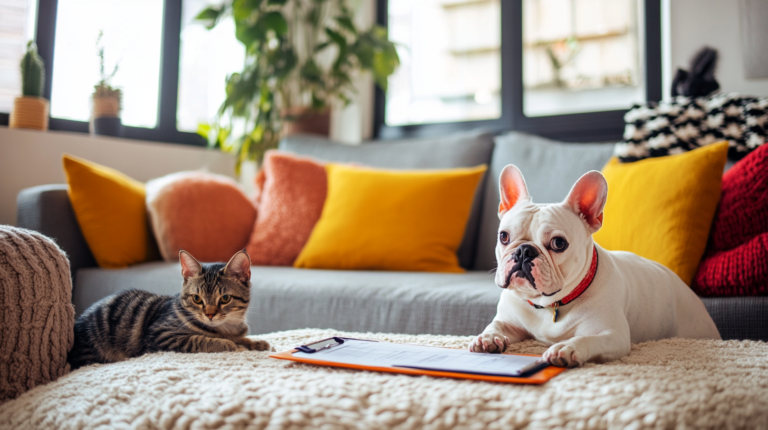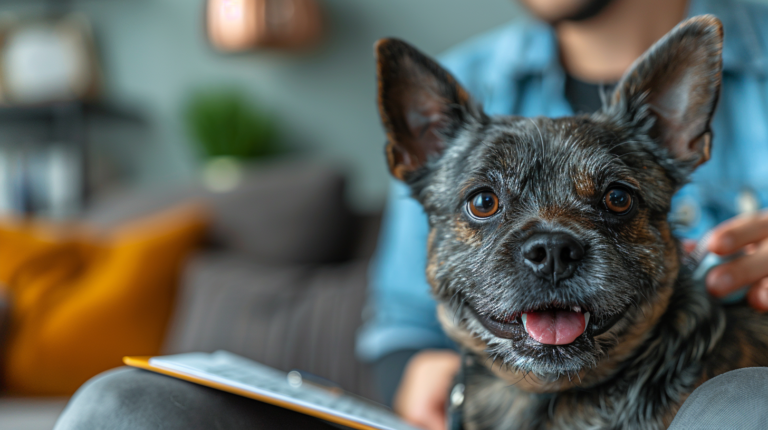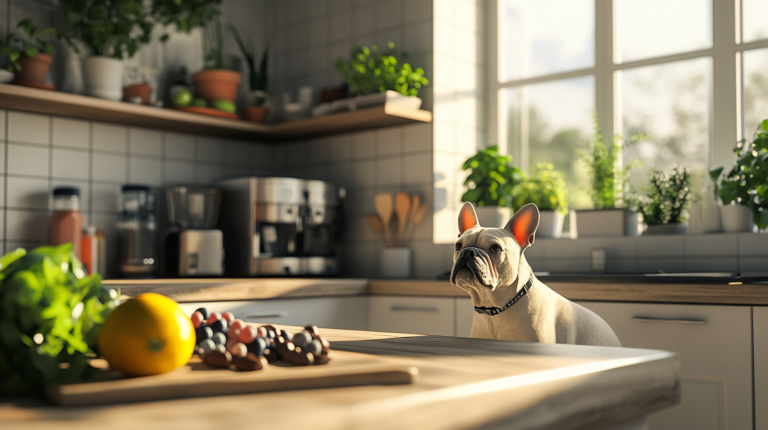Discover comprehensive strategies for pet proofing home with our room-by-room guide. Protect your furry friends from common household hazards with these essential safety tips.
Table of Contents
Creating a safe environment for your furry family members is an essential responsibility of pet ownership. Pet proofing your home isn’t just about preventing damage to your belongings—it’s about ensuring your beloved companions stay healthy and injury-free. This comprehensive guide walks you through effective strategies for pet proofing your home, room by room, providing practical solutions for both common and overlooked hazards.
Understanding the Importance of Pet Proofing Home

Pet proofing your home is similar to childproofing but addresses the unique behaviors and physical capabilities of animals. Dogs, cats, and other pets explore their surroundings differently than humans—often using their mouths, paws, and natural curiosity in ways that can lead to unexpected dangers.
According to the American Veterinary Medical Association, preventable household accidents account for thousands of emergency veterinary visits annually. The American Pet Products Association reports that 67% of U.S. households (approximately 85 million families) own a pet, highlighting how many homes could benefit from proper pet-proofing strategies.
Dr. Maria Sanchez, veterinary behaviorist at Pacific Animal Hospital, explains: “Many pet owners don’t realize how resourceful their animals can be until an accident happens. Taking preventative measures through comprehensive pet proofing your home can save you from emergency vet bills and, more importantly, protect your pet from harm.”
Pet Proofing Home: The Essential Room-by-Room Guide

1. Living Room Safety: The Heart of Pet Proofing Your Home
The living room often serves as the central gathering space for family members—including those with four legs. This high-traffic area contains numerous potential hazards that require attention when pet proofing your home.
Secure Furniture and Decorative Items
Tip-prone furniture poses a significant risk, especially with playful or larger pets. Consider these solutions:
- Anchor bookshelves, entertainment centers, and tall lamps to walls
- Remove or secure fragile decorations from coffee tables and shelves
- Install cord keepers for blinds and curtains to prevent strangulation hazards
- Choose sturdy, weighted picture frames or hang artwork higher on walls
- Select rounded-edge furniture to prevent injuries from sharp corners
Cord Management
Electrical cords present both electrocution and strangulation risks. According to the American Society for the Prevention of Cruelty to Animals (ASPCA), cord-related incidents affect over 1,200 pets annually.
Effective cord management techniques include:
- Using cord covers or cord concealers for exposed wires
- Applying bitter apple spray (safe but unpleasant-tasting deterrent) on cords
- Running wires behind furniture when possible
- Unplugging and storing unused electronics
- Investing in cordless options when replacing electronics
Houseplant Precautions
Many common houseplants are toxic to pets if ingested. The ASPCA Poison Control Center reports that plant-related poisoning is among the top ten reasons for emergency calls.
Safe houseplant practices:
- Research plant toxicity before bringing new greenery home
- Place plants on high shelves or hanging planters
- Consider pet-safe alternatives like spider plants, Boston ferns, or areca palms
- Create a designated “plant room” that remains off-limits to pets
- Remove fallen leaves promptly
Case Study: Living Room Transformation The Martinez family completely reimagined their living space after adopting two kittens. They replaced breakable vases with sturdy wooden décor, installed cord protectors throughout the room, and switched to pet-friendly houseplants. These changes cost under $200 but potentially saved thousands in emergency vet bills and damaged belongings.
2. Kitchen Hazards: Critical Areas for Pet Proofing Home
The kitchen contains numerous pet hazards, from toxic foods to dangerous cleaning supplies and sharp objects.
Secure Food Storage
Many human foods are harmful or even fatal to pets. The Pet Poison Helpline reports chocolate poisoning in dogs as their most common call, with over 7,000 cases annually.
Kitchen food safety measures:
- Install childproof latches on lower cabinets containing food
- Use sealed containers for pantry items
- Keep chocolate, grapes, raisins, xylitol, onions, and other toxic foods in secured locations
- Use garbage cans with secure lids or store them inside latched cabinets
- Clean up food spills immediately
Appliance Safety
Kitchen appliances present burning, crushing, and cutting hazards to curious pets.
Appliance pet-proofing techniques:
- Install stove knob covers to prevent accidental gas release
- Use appliance locks on refrigerators, dishwashers, and ovens
- Unplug and store small appliances like toasters when not in use
- Consider safety covers for garbage disposals
- Install a pet gate to restrict kitchen access during cooking
Cleaning Supply Protection
Household cleaners contain chemicals that can cause severe illness if ingested by pets.
Safe storage practices:
- Store all cleaning supplies in upper cabinets with secure latches
- Choose pet-safe cleaning products when possible
- Keep dishwasher pods in locked containers
- Never leave buckets of cleaning solution unattended
- Store pest control products completely out of reach
Expert Insight: In my 15 years of veterinary emergency medicine, I’ve treated countless pets for kitchen-related toxicities,says Dr. James Wong, emergency veterinarian. Most of these cases could have been prevented with proper storage and awareness. Pet proofing your home, especially the kitchen, is not optional—it’s essential.
3. Bathroom Safety: Often Overlooked in Pet Proofing Your Home
Bathrooms contain numerous hazards despite their smaller size, including medications, cleaning products, and drowning risks.
Medication Management
The Pet Poison Helpline reports that medication ingestion (both prescription and over-the-counter) is the most common cause of pet poisoning, accounting for approximately 50% of their calls.
Medication safety strategies:
- Store all medications in high cabinets with secure latches
- Use medication lock boxes for frequently used prescriptions
- Dispose of unused medications properly
- Never leave pills on countertops, even temporarily
- Pick up dropped pills immediately
Toilet and Bathtub Precautions
Water hazards present drowning risks, especially for smaller pets and puppies.
Water safety measures:
- Keep toilet lids closed and consider toilet lid locks for persistent pets
- Drain bathtubs immediately after use
- Install shower curtains that hang inside the tub to prevent water access
- Keep bathroom doors closed when possible
- Use non-slip mats in tubs to prevent injury if pets do gain access
Small Item Security
Bathrooms often contain small items that pose choking or intestinal blockage risks.
Small item management:
- Store hairpins, elastics, and razors in closed containers
- Keep dental floss, cotton swabs, and feminine products in secured drawers
- Choose trashcans with secure lids or place them inside cabinets
- Regularly check floor for dropped items, especially behind toilets
- Consider magnetic closure toothpaste and cosmetic tubes
Real-world perspective: Veterinary surgeon Dr. Patricia Lee shares: “I’ve removed everything from hairbands to toothpaste caps from pets’ digestive tracts. The bathroom seems innocuous but contains dozens of potential surgical emergencies. Thorough pet proofing your home must include this space.”
4. Bedroom Protection: Creating Safe Sleeping Spaces
Bedrooms contain unique hazards including medications, cosmetics, and laundry items that require attention when pet proofing your home.
Closet and Dresser Safety
Clothing items and accessories can cause intestinal blockages if swallowed.
Clothing safety measures:
- Keep closet doors closed or install child-safety latches
- Store shoes in closed containers or on high shelves
- Use covered hampers for dirty laundry
- Store socks, underwear, and small clothing items in closed drawers
- Be particularly careful with items containing buttons, zippers, or drawstrings
Nightstand Considerations
Bedside tables often hold medications, small electronics, and other hazardous items.
Nightstand safety:
- Choose nightstands with doors or drawers that close securely
- Store reading glasses, contact lens cases, and medications in closed containers
- Secure charging cables or use cord management solutions
- Keep water glasses away from table edges
- Consider wall-mounted bedside storage for completely pet-proof solutions
Bed and Bedding Precautions
Beds themselves can present hazards to pets, from suffocation risks in bedding to physical injuries.
Bed safety measures:
- Be cautious with electric blankets and their cords
- Consider avoiding beds with underneath storage for pets that might become trapped
- Choose pet-friendly fabrics that withstand claws and are easily washable
- Wash bedding regularly to reduce allergens
- Consider the height of your bed if you have senior pets or breeds prone to back issues
Survey Data: A 2023 survey by the American Animal Hospital Association found that 37% of emergency pet injuries occurred in bedrooms, with the majority involving ingestion of personal items like jewelry, hair accessories, and small electronics.
5. Laundry Room Risk Management: Essential for Pet Proofing Your Home
The laundry room contains some of the most dangerous household items for pets, including toxic detergents and mechanical hazards.
Chemical Safety
Laundry products contain concentrated chemicals that can cause severe illness or chemical burns.
Chemical storage solutions:
- Store all detergents, fabric softeners, and stain removers in upper cabinets
- Choose child-resistant packaging when available
- Clean spills immediately and thoroughly
- Consider switching to pet-safer detergent formulations
- Keep laundry pods in locked containers—they’re particularly dangerous due to their bright colors and concentrated formula
Appliance Protection
Washers and dryers pose entrapment and overheating risks to curious pets.
Appliance safety measures:
- Keep washer and dryer doors closed at all times
- Check inside appliances before starting cycles
- Install childproof door locks on front-loading machines
- Clean lint traps regularly to prevent fire hazards
- Consider a pet gate for the laundry room if complete restriction is necessary
Small Item Management
Laundry rooms often accumulate small items like dryer sheets, socks, and loose change.
Small item practices:
- Dispose of used dryer sheets immediately
- Check pockets thoroughly before washing
- Store loose buttons, safety pins, and coins in secure containers
- Keep ironing supplies in closed cabinets
- Check behind and under appliances regularly for lost items
Expert Advice: Veterinary toxicologist Dr. Renee Matthews warns: “Laundry products cause some of the most severe chemical burns and poisonings we see in emergency medicine. The concentrated formulas in modern detergents can cause irreparable damage to a pet’s digestive tract or eyes within minutes of contact.”
6. Garage and Outdoor Area Protection
Extending pet proofing your home to include garages and yards is crucial for comprehensive safety.
Chemical and Tool Storage
Garages typically contain automotive fluids, pesticides, fertilizers, and tools that present significant hazards.
Safe storage practices:
- Store all chemicals on high shelves or in locked cabinets
- Clean up automotive fluid spills immediately (especially antifreeze, which tastes sweet but is lethal)
- Hang tools on wall-mounted racks out of reach
- Secure power tools with cord management systems
- Use locked storage for garden chemicals and fertilizers
Garden Safety
Many common garden plants are toxic to pets, and garden equipment presents physical dangers.
Garden pet-proofing techniques:
- Research plant toxicity before landscaping
- Create physical barriers around dangerous plants
- Store garden tools in secured sheds or cabinets
- Choose pet-safe alternatives to cocoa mulch (toxic to dogs)
- Securely store garden fertilizers, pesticides, and herbicides
Fence and Boundary Security
Proper containment prevents pets from wandering into dangerous areas or escaping the property.
Boundary safety measures:
- Inspect fences regularly for holes or weak points
- Consider dig guards for determined diggers
- Install self-closing gates with secure latches
- Use temporary barriers during landscaping or construction
- Consider electronic containment systems as backup protection
Case Study: Comprehensive Garage Transformation After their dog experienced antifreeze poisoning (requiring $3,500 in emergency treatment), the Johnson family completely redesigned their garage storage. They installed wall-mounted cabinets with childproof locks, created dedicated tool storage zones, and implemented a strict clean-up protocol for any spills. Their veterinarian credits these changes with preventing a recurrence despite having three pets.
Pet Proofing Home: Special Considerations for Different Pets
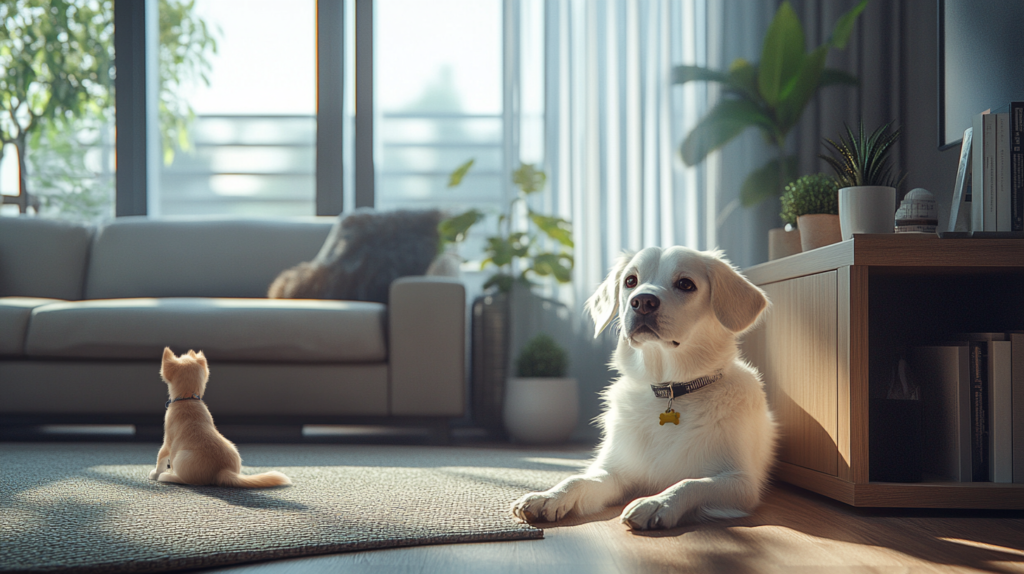
Different pets require tailored approaches to home safety. Understanding species-specific behaviors helps create more effective protection.
Dog-Specific Considerations
- Height accessibility varies dramatically by breed—a Great Dane can reach countertops easily, while a Chihuahua cannot
- Chewing behaviors are common, especially in puppies and adolescent dogs
- Many dogs can learn to open simple latches or doors
- Food motivation tends to be higher than in other pets
- Larger dogs may accidentally knock over furniture or décor
Cat-Specific Precautions
- Vertical space access—cats can reach most surfaces in your home
- Interest in small, moving objects increases choking hazards
- Ability to squeeze into small spaces necessitates checking appliances
- Tendency to chew stringy items (dental floss, yarn) creates linear foreign body risks
- Curiosity about water sources requires toilet lid management
Small Animal Considerations (Rabbits, Guinea Pigs, Hamsters)
- Wire-chewing behaviors require extensive cord management
- Small size increases risk of becoming trapped in furniture gaps
- Sensitive respiratory systems require careful cleaning product selection
- Tendency to gnaw on baseboards, furniture, and wallpaper
- Risk of injury from larger household pets requires separation strategies
Professional Perspective: Animal behaviorist Dr. Amanda Chen notes: Effective pet proofing your home requires understanding how your specific pet perceives and interacts with the environment. What’s dangerous for a dog might be irrelevant for a bird, and vice versa. Take time to observe your pet’s unique behaviors and adjust your pet-proofing strategy accordingly.
Creating a Pet-Safe Home Maintenance Schedule
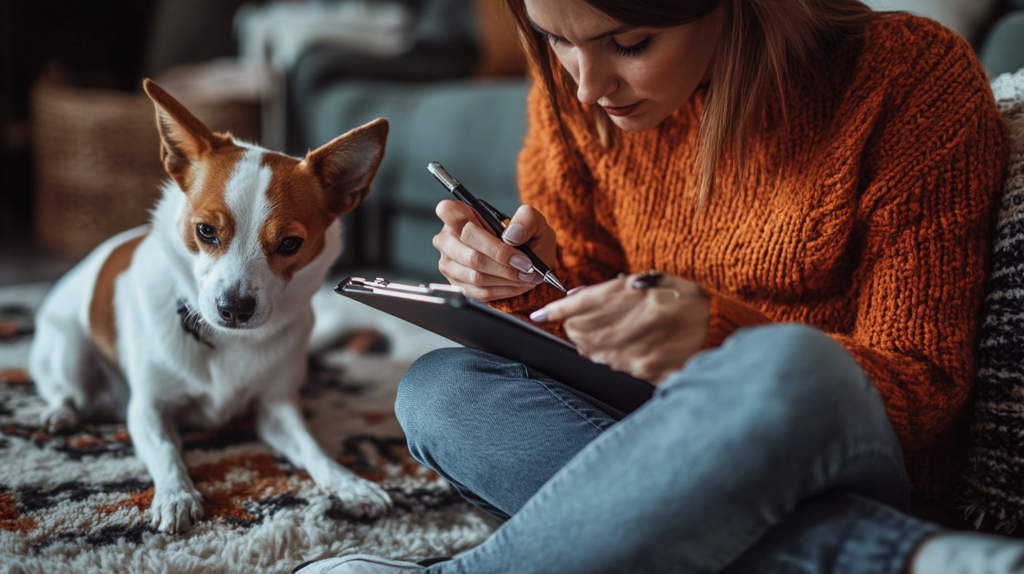
Pet proofing your home isn’t a one-time project—it requires ongoing vigilance and maintenance.
Daily Checks
- Quick scan for dropped items, especially in kitchen and bathroom
- Ensure trash cans are secure
- Check that pet gates and barriers remain in place
- Verify that cabinets and drawers are fully closed
- Put away any temporarily used hazardous items (medications, cleaning supplies)
Weekly Maintenance
- Inspect pet toys for damage and replace as needed
- Check cord protectors and cabinet latches for wear
- Clean under furniture where hazardous items might have rolled
- Update pet-safe plant care (trimming, removing fallen leaves)
- Verify that window screens are secure
Monthly Safety Audit
- Comprehensive home walkthrough from pet-level perspective
- Check batteries in electronic pet barriers if used
- Inspect fence perimeter for new holes or weak spots
- Review emergency plans and update as needed
- Restock pet first aid supplies
Seasonal Considerations
- Spring: Be vigilant about garden chemicals and newly planted toxic plants
- Summer: Check yard for mushrooms after rain and ensure cooling options
- Fall: Secure leaf bags and keep decorative items like potpourri out of reach
- Winter: Be cautious with holiday decorations and keep ice melt products secured
Statistical Insight: Research from the University of California Davis Veterinary Medical Teaching Hospital shows that homes implementing regular safety maintenance schedules reduced pet emergency visits by 73% compared to those without systematic checkups.
Technological Solutions for Pet Proofing Your Home
Modern technology offers innovative ways to enhance traditional pet-proofing methods.
Smart Home Integration
- Motion-activated camera systems to monitor pet activity in restricted zones
- Automatic shut-off features for appliances if pets trigger sensors
- Smart cabinet locks that can be controlled remotely
- Water leak detectors for bathrooms and laundry areas
- Climate control systems that maintain safe temperatures when pets are home alone
Pet-Specific Technology
- GPS tracking collars for escape-prone pets
- Microchip-activated pet doors that prevent wildlife entry
- Automatic water fountains that reduce interest in toilet water
- Puzzle feeders that safely occupy pets’ attention
- Anti-anxiety devices for stress-related destructive behaviors
DIY Tech Solutions
- Repurposing baby monitors for pet monitoring
- Creating contact alarms for off-limits areas
- Installing motion-activated air deterrents for countertops
- Using programmable feeders for consistent mealtimes
- Setting up virtual barriers with sonic deterrent technology
Expert Opinion: Smart home designer Marcus Williams explains: The intersection of pet safety and home automation creates powerful protection layers. Something as simple as a motion-activated camera that sends alerts when your pet enters a restricted area can prevent disasters before they happen. These technologies complement traditional pet proofing your home strategies rather than replacing them.
Pet Proofing Your Home on a Budget
Creating a pet-safe environment doesn’t require expensive renovations or specialty products.
Cost-Effective Solutions
- Repurpose baby-proofing products (often available secondhand)
- Use tension rods to block under-furniture access
- Create DIY cord covers from split pool noodles
- Use binder clips to secure bags of pet-toxic foods
- Repurpose shower caddies for organizing small hazardous items
Prioritizing Expenses
- Focus first on securing toxic substances (medications, chemicals)
- Address choking hazards before cosmetic concerns
- Implement zero-cost solutions like closing doors and picking up items
- Spread higher-cost modifications across several months
- Invest in quality for frequently used items like trash cans and cabinet latches
Community Resources
- Pet supply exchange groups on social media
- Library books on DIY pet projects
- Community workshops on pet safety
- Veterinary clinic handouts and resources
- Local pet organizations offering safety supplies
Real-world Example: New pet owner Maya Thompson created a completely pet-proofed apartment for under $100 by using creative repurposing. She converted an old bookshelf into a barrier gate, used shower curtain tension rods to block access under furniture, and repurposed clear plastic storage bins with added ventilation holes to create protective covers for power strips.
FAQs About Pet Proofing Your Home
What are the most commonly overlooked hazards when pet proofing your home?
Many pet owners focus on obvious dangers but miss subtle hazards like essential oil diffusers, button batteries in remote controls, and xylitol-containing products (including some peanut butters and toothpastes). Small spaces behind appliances where pets can become trapped and houseplants with toxic properties are also frequently overlooked. Always conduct a thorough room-by-room assessment from your pet’s physical perspective to identify these less obvious risks.
How do I pet-proof my home for a new puppy versus an adult dog?
Puppies generally require more intensive pet proofing due to their chewing behaviors, smaller size, and curiosity. Focus on securing low-lying hazards, managing electrical cords, and removing small chewable items. For adult dogs, tailor your approach based on their established behaviors—some need protection from food sources, while others might be climbers requiring higher-level security. Both age groups benefit from proper trash management and toxic substance security.
Are certain dog or cat breeds more likely to get into trouble around the house?
Yes, breed tendencies can influence behavior around potential hazards. Hunting breeds like Beagles and Retrievers are often more determined to access food sources. Terriers may be more likely to dig and destroy items. Among cats, Oriental breeds like Siamese and Bengals tend to be more inventive about accessing restricted areas. Working breeds with high intelligence, like Border Collies, often figure out basic cabinet latches. However, individual personality matters more than breed—always observe your specific pet’s behaviors.
What emergency supplies should I keep on hand as part of pet proofing my home?
Every pet-friendly household should maintain an emergency kit including: your veterinarian’s contact information and nearest emergency clinic location, pet-safe poison control number (ASPCA: 888-426-4435), hydrogen peroxide (to induce vomiting only under veterinary guidance), activated charcoal, digital thermometer, gauze and self-adhering bandages, saline eye wash, and a pet carrier for emergency transport. Also keep records of your pet’s weight for proper emergency medication dosing.
How can I tell if a houseplant is safe for my pets when pet proofing my home?
Always research plants before bringing them home. The ASPCA maintains a comprehensive database of toxic and non-toxic plants at aspca.org/pet-care/animal-poison-control/toxic-and-non-toxic-plants. When in doubt, either research the specific plant species (not just general type) or choose from verified pet-safe options like spider plants, Boston ferns, areca palms, and certain types of orchids. Remember that some plants may cause mild stomach upset while others can be fatally toxic.
What should I do if my pet ingests something dangerous despite pet proofing my home?
Act immediately. If you witnessed the ingestion, collect the product packaging or plant sample to show veterinary staff. Call your veterinarian or the ASPCA Poison Control Center (888-426-4435) right away—do not wait for symptoms to appear. Never induce vomiting without professional guidance, as this can sometimes cause more harm. For serious exposures, proceed directly to an emergency veterinary clinic while calling ahead to alert them of your arrival.
Keep Your Pets Safe and Secure
Pet proofing your home is an ongoing process that evolves with your pet’s age, abilities, and behaviors. By taking a systematic, room-by-room approach and remaining vigilant about potential hazards, you create an environment where your furry family members can thrive safely.
Remember that even the most thorough pet proofing can’t replace supervision. Regularly reassess your home’s safety measures, especially when introducing new items, rearranging furniture, or welcoming additional pets to your family.
For more expert pet care tips and product recommendations, visit BlithePet.com — your trusted source for pet wellness.
Conclusion
Creating a pet-safe home environment demonstrates the care and responsibility that define loving pet ownership. By understanding species-specific behaviors, recognizing common household hazards, and implementing appropriate safety measures, you provide your pets with protection from preventable accidents and injuries.
Pet proofing your home isn’t just about avoiding emergencies—it’s about creating peace of mind. When you know your environment is secure, you and your pets can enjoy your shared space with confidence and joy.
Have a similar experience with your pet? Share it in the comments below!

